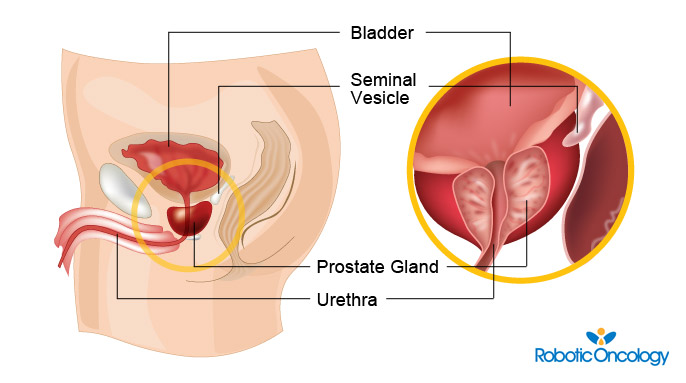WHAT IS THE PROSTATE?

The Prostate In A Nutshell
Understanding the normal development and function of the prostate, it’s location within the body, and what it is connected to, will only help you as you begin to learn about prostate cancer and it’s potential effect on a man’s life over time.
The prostate is a small sex gland that is essential for the reproductive abilities in a man. The prostate is located beneath the bladder between the rectum and penis, and it is connected to various vital structures that control urinary, bowel, sexual functions and ultimately fertility. The urethra (the tube that runs the length of the penis and into the bladder) within the prostate merges with the seminal vesicle and ejaculatory ducts. You can live a normal, healthy life without your prostate but it is required for reproduction.
The prostate has many vital functions:
- Produces seminal fluid that carries and nourishes the sperm
- Aids in the control and flow of urine, semen, and seminal fluid
- Connected to the nerves needed for erections
- Produces Prostate Specific Antigen (PSA)
When healthy, the prostate is small, around the size of a walnut and about 11 grams, but it can vary in size based on the age of a man. The prostate is divided by either zone or lobe. The four zones (which are more often used in pathology) include the peripheral zone, central zone, transition zone, and anterior fibro-muscular zone. The lobes (which are more often used in anatomy) include the anterior lobe, posterior lobe, lateral lobe, or median lobe. These classifications allow the doctor to better map and locate where cancer is, if present:
Prostatitis – Infection and/or inflammation of the prostate. It can affect men of all ages.
Enlarged Prostate (BHP) – Also known as Benign Prostatic Hyperplasia, BPH is the non-cancerous enlargement of the prostate as men get older in age. It commonly leads to issues urination.
Prostate Cancer – Behind skin cancer, prostate cancer is the most common form of cancer in men. To learn more about prostate cancer visit our What is Prostate Cancer section.
